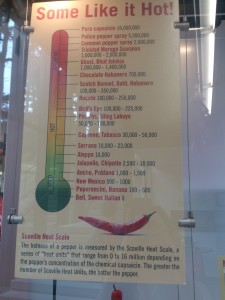On December 7th, a panel of Food and Brand Lab experts came to the Becker-Rose Café and introduce us to their interesting works on behavioral psychology related to food. Some of their research areas include grocery shopping psychology, marketing nutrition, restaurant confidential. I found all of their findings to be highly intriguing. For example, they explained how when people go into a buffet, they usually get the food in the order they are presented. For example, when they see salad or vegetables and bread in the beginning of the buffet line, people will naturally get a lot of salad and bread. When they get to the end of the line, where they see proteins, they will no longer have a lot of room on their plates. Therefore, if people are always guided to the salad bar first when they are in the buffet, they will more likely eat more vegetables, less meat and have a healthier meal as a result.
I think the above concept can be also applied in Cornell dining halls. In our dining halls, the salad bar is usually separated from the lines for the entree. Because of the line for the entree is usually longer than that for the salad, I usually line up for the entree first in case the line gets any longer. As a result, I always filled my plates with more proteins than I needed. Sometimes, I do not even have room for salad or vegetables. Therefore, I believe if the dining halls can have all the food in one line, and have salad in the beginning of the line, it can help me and many other students to eat more healthily.
Another interesting finding that the Food and Brand Lab had was the effect of NYC Mayor Bloomberg’s Sugary Drinks Portion Cap Rule. In the study, they had participants fill out surveys and participants were provided soda drinks when they were filling out the surveys. The experimental group received surveys with Mayor Bloomberg’s image printed on them and the control group had regular surveys. Turns out, the experimental groups drink more soda during the experiment than the control group who have no Bloomberg’s image on their surveys. It appeared that people’s reaction towards Mayor Bloomberg’s soda rule actually resulted in negative effect on their sugary-drink consumption. People are angry at Mayor Bloomberg’s restricting rule and thus their annoyance cause their rebellious feeling to drink more of the soda. I thought that study was absolutely thought-provoking. Rules are made to help people but if resentment are developed towards the rules, opposite results may occur. There was many controversies over whether Mayor Bloomberg’s soda rule is necessary. The study perhaps contribute to another reasons why it should indeed not be implemented.


